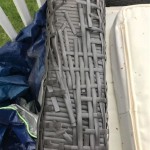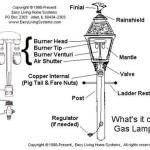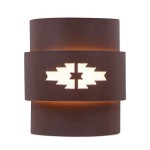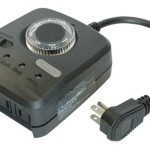Model Specification For Networked Outdoor Lighting Control Systems
Networked outdoor lighting control systems offer significant advantages over traditional lighting infrastructure, including improved energy efficiency, enhanced safety, and reduced maintenance costs. Specifying these systems requires a comprehensive approach that addresses functional requirements, communication protocols, security considerations, and integration with other smart city initiatives. This document outlines a model specification to guide the procurement and implementation of networked outdoor lighting control systems.
System Architecture
The system architecture should be scalable, flexible, and adaptable to future expansion. It should support a variety of luminaire types and communication technologies. The system should incorporate the following components:
- Central Management System (CMS): A software platform for monitoring, controlling, and managing the entire lighting network.
- Network Gateways: Devices that bridge the communication gap between the CMS and individual luminaires or groups of luminaires.
- Smart Lighting Controllers: Devices installed within or adjacent to luminaires to enable individual control and data collection.
- Luminaire Interface: Compatibility with various luminaire types, including LED, high-intensity discharge (HID), and induction.
- Communication Network: A robust and secure network infrastructure for data transmission and control signals.
Communication Protocols
The selected communication protocol should be open, standardized, and interoperable with other smart city systems. The specification should consider the following communication protocols and select the most appropriate based on project requirements:
- Wireless Communication: Technologies such as Wi-Fi, cellular, or radio frequency (RF) mesh networks offer flexibility and cost-effectiveness.
- Powerline Communication (PLC): Utilizing existing power lines for data transmission, reducing infrastructure costs.
- Wired Communication: Ethernet or fiber optic cables offer high bandwidth and reliability for critical applications.
Data Management and Security
Data security and privacy are paramount in networked lighting control systems. The system should incorporate robust security measures to protect against unauthorized access and data breaches. Specifications should address:
- Data Encryption: Encryption of all data transmitted and stored within the system.
- User Authentication: Multi-factor authentication for authorized access to the system.
- Data Backup and Recovery: Regular data backups and disaster recovery mechanisms.
- Cybersecurity Standards Compliance: Adherence to relevant cybersecurity standards and best practices.
Functional Requirements
The system should provide a comprehensive set of functionalities to enable efficient management and control of the lighting infrastructure. These functionalities should include:
- Individual Luminaire Control: Ability to control individual luminaires for dimming, switching, and scheduling.
- Group Control: Control groups of luminaires based on location, function, or schedule.
- Scheduling and Automation: Automated lighting schedules based on time of day, occupancy, or other events.
- Remote Monitoring and Control: Real-time monitoring and control of the lighting network via a web-based interface or mobile application.
- Fault Detection and Reporting: Automated fault detection and notification for proactive maintenance.
- Energy Monitoring and Reporting: Detailed energy consumption data and reporting for performance analysis and optimization.
Integration with Other Systems
The networked lighting control system should be designed for seamless integration with other smart city systems, such as traffic management, environmental monitoring, and public safety platforms. This integration should enable:
- Data Sharing and Interoperability: Exchange of data between the lighting control system and other systems.
- Unified Platform Management: Management and control of multiple smart city systems from a single platform.
- Enhanced Functionality and Efficiency: Improved functionality and efficiency through coordinated operation of various systems.
System Performance and Reliability
The networked lighting control system should be designed for high performance and reliability. The specification should include requirements for:
- System Uptime: Guaranteed minimum system uptime to ensure continuous operation.
- Response Time: Rapid response time for control commands and data retrieval.
- Scalability: Ability to scale the system to accommodate future expansion and growth.
- Robustness: Resistance to environmental factors such as temperature, humidity, and electromagnetic interference.
Installation and Maintenance
The specification should address installation and maintenance procedures to ensure proper system deployment and long-term performance. This includes:
- Installation Standards: Compliance with relevant electrical codes and safety regulations.
- Commissioning Process: A comprehensive commissioning process to verify system functionality and performance.
- Maintenance and Support: Ongoing maintenance and technical support from the vendor.
- Documentation: Detailed documentation for system operation, maintenance, and troubleshooting.
Procurement and Vendor Selection
The procurement process should focus on selecting a qualified vendor with proven experience in deploying networked lighting control systems. The selection criteria should include:
- Technical Expertise: Demonstrated technical expertise in networked lighting control systems and related technologies.
- Experience and Track Record: A proven track record of successful project implementations.
- References and Case Studies: Client references and case studies demonstrating successful system deployments.
- Warranty and Support: Comprehensive warranty and ongoing technical support.

Municipal Consortium Releases Updated Model Specification For Networked Outdoor Lighting Control Systems

Introduction To Wireless Lighting Controls

Introduction To Lighting Controls

Introduction To Wireless Lighting Controls

Introduction To Lighting Controls

Nlight Air Networked Lighting Controls

Introduction To Lighting Controls

What Is Dali An Introduction To Guide

Networked And Standalone Lighting Controls Published

Introduction To Lighting Controls







